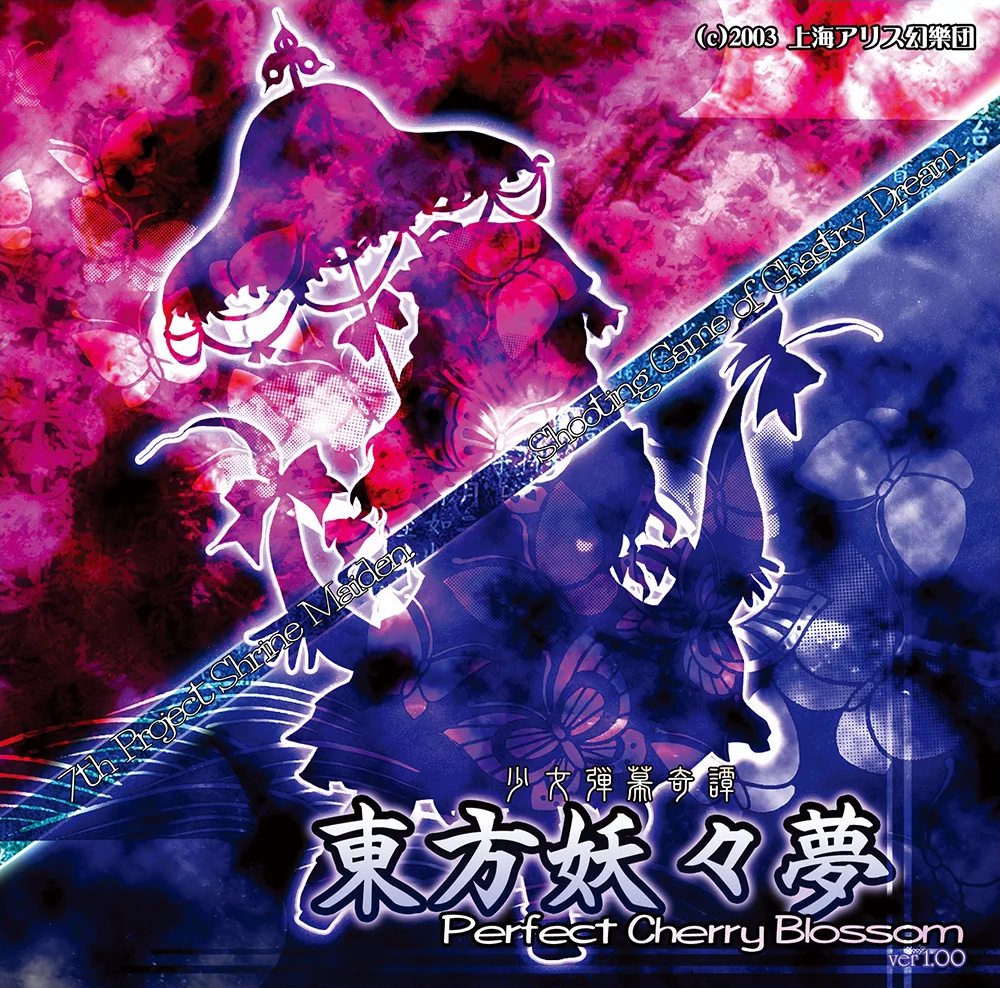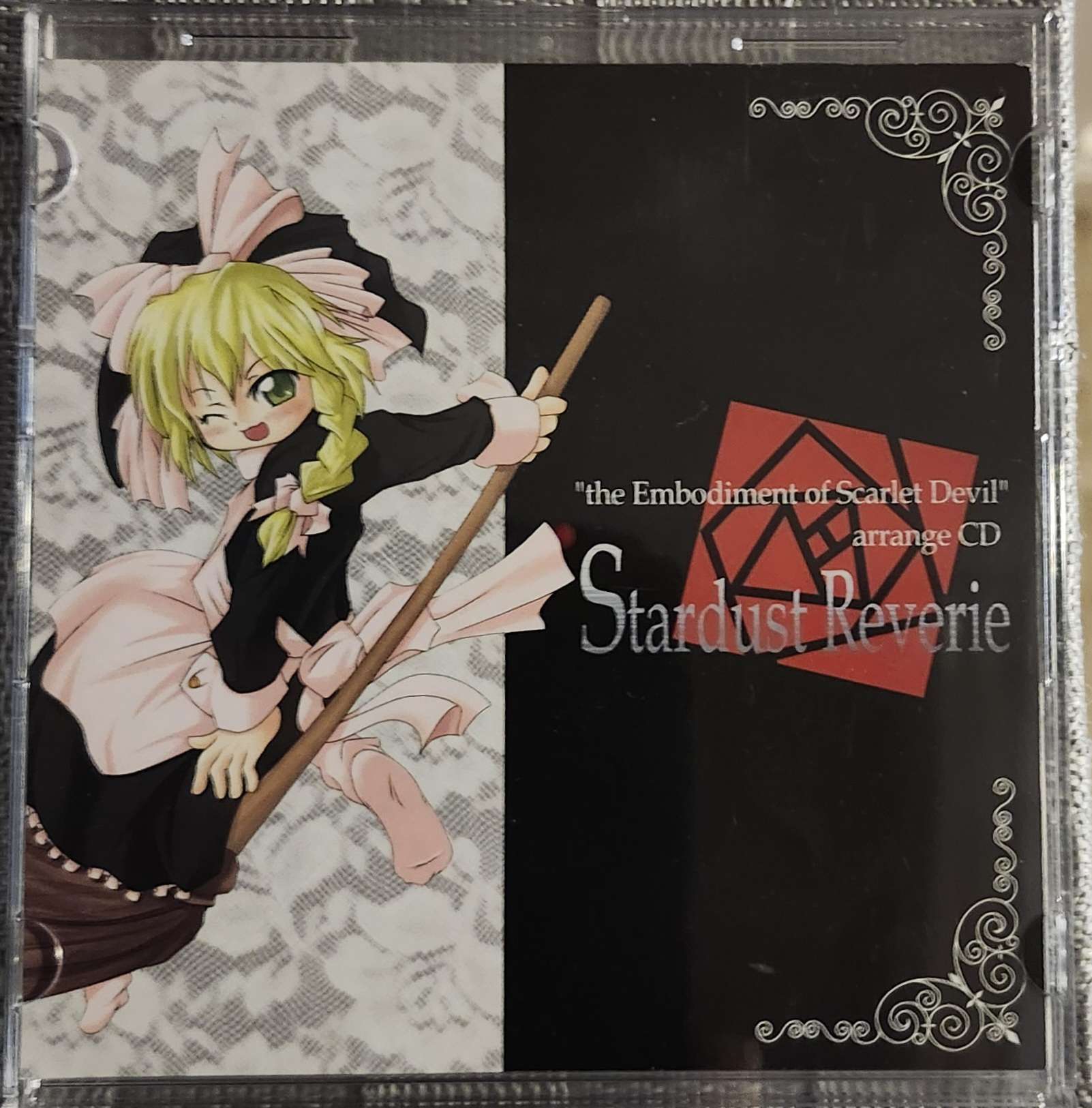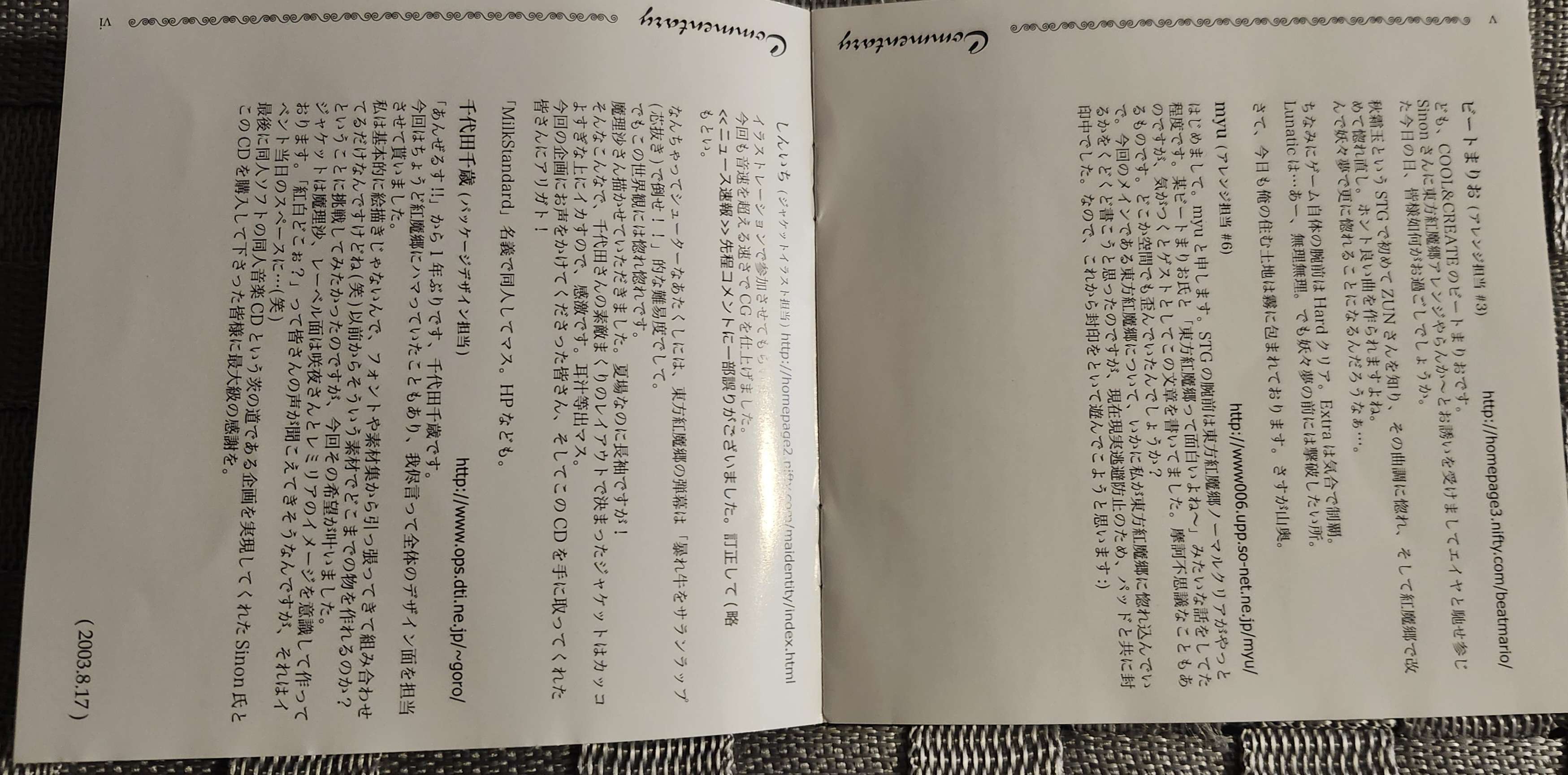
Written by SU_Tempest
Wednesday, 24-Apr-24 01:09:58 UTC

Written by SU_Tempest
Wednesday, 24-Apr-24 01:09:58 UTC
What’s the oldest Touhou music arrange? Who was the first to produce an arrange album, and when? And what was the scene like back in the day? These are all questions that fascinate me. The Touhou music scene might be thousands of circles strong with worldwide artists today, but what was it like before Touhou blew up? In today’s episode of TTMR, I go on a deep dive to answer as much as possible.
As far as my research can point out, the first fan-composed (doujin) album containing arranges of Touhou music of any kind was Stardust Reverie. This album is credited as a collaboration between two circles: PopKorn and Hara-Kara, but it also involved a few other very important people; I’ll get to them in the next segment.
Many sources will tell you a singular circle called “PopKorn & HaraKara” is responsible for this album, but the fact is these are two distinct groups. Much like how, for example, Unlucky Morpheus and AQUAELIE collaborated to produce Unbeatable Accomplice.
So, to sum it up, Stardust Reverie is a collaborative work. The people involved in its production are likely the historical first to arrange Touhou music, print it on a CD, and sell copies at an event. But which event and when?
Stardust Reverie, named after one of Marisa’s spell cards and proudly featuring her in her EoSD incarnation on the cover art, came out on August 17, 2003, and was released at Comiket 64. I was ten years old and didn’t even have Internet yet at the time. Many of you were probably even younger, some of you might not even have been born yet.
To give you an idea of the timeline (and make you feel horribly old if you remember any of these), here’s a bunch of things that came out or happened at around the same time:
Where Touhou was at the time:

The era in gaming (for context):


Photos courtesy of Andromis, used with permission!
Stardust Reverie is a seven-track album, all of them arranges of Embodiment of Scarlet Devil songs. The cover art features a fanart of Marisa in her EoSD rendition, socks and all, and the CD itself quite adorably showcases EoSD danmaku as part of its printed art.
Four people were involved in this album’s production; the circle leaders of the aforementioned PopKorn and Hara-Kara, and two others. So, who are they?
PopKorn is a single-person circle managed by an artist called Sinon. They have been involved in the doujin scene since 2000 and collaborated with Florist Cafe. As far as my research tells me, Sinon’s last known work was tokachi recorder, a tiny 2-track album of The Idolm@ster songs released in 2010.
Hara-Kara was a short-lived circle managed by Frozen Voice, who later founded the aforementioned Florist Cafe. “Hara-Kara” is credited as a circle for just three releases; this one, prism seal (the only other PopKorn & Hara-Kara Touhou album), and Angelus!!, a Ragnarok Online arrange album released in 2002. As the circle head of Florist Cafe, Frozen Voice continued releasing doujin albums until 2009. Their last known work is Winter Flowers, to which Sinon also contributed.
Sinon produced Tracks 1, 5, and 7. Frozen Voice produced Tracks 2 and 4. But what about 3 and 6? Well, they might be familiar to you already (or at least, one of them might be) if you are remotely interested in the Touhou music scene…



Photos courtesy of Andromis, used with permission!
It’s uncertain. Behind-the-scenes information on doujin album production is exceedingly rare, and I have no way of knowing which of the 7 tracks on the album was produced first, short of tracking down Sinon, Frozen Voice, beatMARIO, and myu myself, and ask them directly - which they could be forgiven for forgetting, since this was well over 20 years ago now.
If I had to guess, it’s probable that beatMARIO and myu’s contributions did not come first, which would leave any of the other five tracks as possible candidates. I also don’t want to be boring and just say Track 1 was the first one ever made; it’s possible, but it’s not a certainty. Really, your guess is as good as mine.
I adore beatMARIO and myu’s contributions to this album. I really do. The former produced a remix of a personal favorite ZUN original of mine, A Soul as Scarlet as a Ground Cherry (EoSD’s Stage 1 theme), in his iconic style. The latter arranged Shanghai Alice of Meiji 17 in a peppy, jazzy style that is simply always fun to listen to.
But I couldn’t choose either of these tracks to feature in this review. I had to choose either one of Sinon or Frozen Voice’s tracks, and my choice landed on Track 2 and its adorably, deliriously Engrish title of Shan’t high cold chance come.
Look, I’m not here to make fun of or belittle the English skills of what were probably post-grad Japanese students making Touhou music for fun.
But good grief, this title is such a word salad! I’ll say that does make it easy to remember. I just refer to it as Shan’t.
Shan’t is an arrange of one of the most recognizable Touhou themes, 上海紅茶館 ~ Chinese Tea, perhaps even more iconic than Meiling’s own boss theme. Why do I like it so much?
It’s a 4 minute 17 second-long track that is musically both nothing special and everything special to me. If you were around in 2003 or listened to what fan arrangers - of any video game - were making at the time, you might recognize the sounds of what some might lovingly refer as having a “early 00s techno remix” flavor. I’m aware it’s a very broad and catch-all term, but many instruments are common to these types of arranges, presumably due to similarities in default sound banks and instruments available in DAWs and music production software of the time.
Shan’t has that charm throughout. It’s pretty much a straight reinterpretation of Chinese Tea from start to finish, just with the drums, hats, kicks, electric piano, and pads you’d find in the arsenal of an amateur music producer in the early 2000s. It’s charming like only amateur work of the era can be.
Only a couple of things differ in terms of musical structure. The ZUN original has a 14-second intro with violin and pads before breaking out with all instruments. Frozen Voice dispenses with that and starts immediately with full instrumentation.
As is typical for early electronic-music remixes, the drumline, bass, and electronic accompaniment are a little louder and more present throughout the track, whereas ZUN’s original track keeps his piano and trumpets on the center stage.
Electronic pads carry the main melody from the start to about 1:49, where it trades places with an electric piano; it sounds different from ZUN’s, but it does help keep the track more ZUN-like, for lack of a better way to put it. An odd instrumentation fade-out starts at 2:18, during which the piano gradually goes away. Then, the original electronic pads fade back in from 2:35, and the track reprises Chinese Tea from 2:44 until the end.
Interestingly, Frozen Voice didn’t significantly amp up the BPM for this arrange, even though it is a fairly common choice in “techno” flavored remixes of the era. Shan’t maintains about ~140 BPM (estimated by ear, I could be off by one or two) throughout. This is about the same BPM as the original Chinese Tea by my ear, which probably helps keep Shan’t close to its origin and make it… well, ZUN-like! Some might call it uninspired to keep close to the original, but I disagree, there’s a place for remixes that simply reinterpret how the original melody sounded without overly changing the atmosphere.
To put it another way, Shan’t wouldn’t have been too out of place in an “official” remix album.
If you’re into the doujin scene at all, Comic Market is one of the places to be in Japan. It isn’t the largest fan convention in the world for no reason, after all. So it should come to no surprise that Comiket 64 in 2003 had the attendance numbers to match. According to their own C64 after report, there were 35,000 circles in attendance, for about 460,000 visitors.
Among these 35,000 circles, besides ZUN and PopKorn & Hara-Kara, I spotted a few names that went on to become involved in the Touhou music scene. In no particular order…
I think that about covers everyone! Of course, many other, even bigger artists progressively appeared over the years that followed as Touhou grew in popularity, but the four people responsible for Stardust Reverie are, arguably, the root of this big tree that became the Touhou music scene.
We owe a lot to ZUN, obviously, but if you like any kind of fan-arranged Touhou music, then I would say we also owe a lot to Sinon, Frozen Voice, Beatmario, and myu314.
Still active under the COOL&CREATE banner. You should definitely check them out if you haven’t yet.
As for Sinon and Frozen Voice, the original members of PopKorn and Hara-Kara, respectively… I did my best Aya impression of a journalist and went to do a bit more digging to find out how they’re doing.
Sinon has a HatenaBlog, last post on February 2021, where they talk about the games they played up until that point. They seem to be a fan of Baba is You and had pretty good points regarding what constitutes the best kind of background music for work.
They’re also on Twitter, but I don’t have an account and I will never get one, so I can’t find out if they’re any active there.
Frozen Voice is… Well. I’ve got no idea where they are. No socials or blogs that I could find, and all the links I did find are completely dead or 404. The Florist Cafe website last updated in 2010; since then, nothing. I wonder if they are still following the scene or Touhou at all. Most importantly, I hope they’re okay. After all, it is one of their songs I chose to feature in this review.
Song title: Shan’t high cold chance come
Artist: Frozen Voice
Album: Stardust Reverie (Track 2)
Circle: PopKorn & Hara-Kara
Release date: 2003/08/17 (Comiket 64)
Genre: Techno
Type: Instrumental
Touhou originals remixed:

TTMR 004: LAVO - Sacred Music For The Pleasant Goddess
SU_Tempest | Saturday, 29-Jul-23 02:06:14 UTC

TTMR 009: Sound Online - Illusion
SU_Tempest | Saturday, 28-Oct-23 07:38:57 UTC

TTMR 010: Golden City Factory - The Mystery in Your Town
SU_Tempest | Sunday, 19-Nov-23 22:43:35 UTC

TTMR 011: ad libitum records - The entire Youfuurenka album
SU_Tempest | Tuesday, 19-Dec-23 00:08:28 UTC

TTMR 0013: Shibayan (on a Syrufit album) - My Beloved Puppet
SU_Tempest | Sunday, 18-Feb-24 23:37:39 UTC
Login